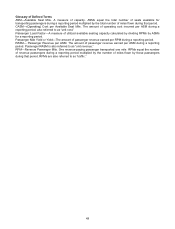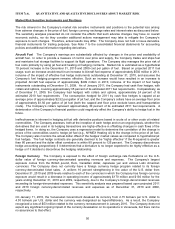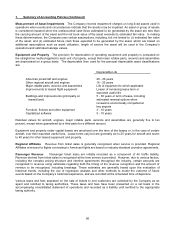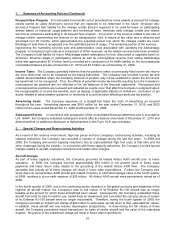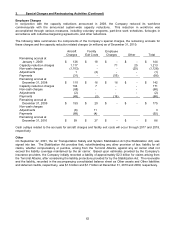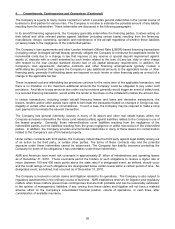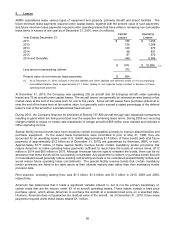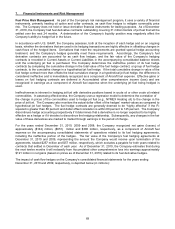American Airlines 2010 Annual Report Download - page 62
Download and view the complete annual report
Please find page 62 of the 2010 American Airlines annual report below. You can navigate through the pages in the report by either clicking on the pages listed below, or by using the keyword search tool below to find specific information within the annual report.
59
NOTES TO CONSOLIDATED FINANCIAL STATEMENTS
1. Summary of Accounting Policies
Basis of Presentation The accompanying consolidated financial statements as of December 31, 2010 and for
the three years ended December 31, 2010 include the accounts of AMR Corporation (AMR or the Company) and
its wholly owned subsidiaries, including (i) its principal subsidiary, American Airlines, Inc. (American) and (ii) its
regional airline subsidiary, AMR Eagle Holding Corporation and its primary subsidiaries, American Eagle Airlines,
Inc. and Executive Airlines, Inc. (collectively, AMR Eagle). The consolidated financial statements as of and for the
years ended December 31, 2010, 2009 and 2008 include the accounts of the Company and its wholly owned
subsidiaries as well as VIEs for which the Company is the primary beneficiary. All significant intercompany
transactions have been eliminated.
New Accounting Pronouncements In November of 2009, the FASB issued new guidance that significantly
changes the accounting for revenue in arrangements with multiple deliverables by requiring entities to separately
account for individual deliverables in more of these arrangements. The guidance removes the criterion that
entities must use vendor-specific objective and reliable evidence of fair value when separately accounting for
deliverables, allowing for the recognition of revenue in a manner that more closely aligns with the economics of
certain arrangements based on management’s estimate of the selling price. The standard must be applied
prospectively to revenue arrangements entered into or materially modified in fiscal years beginning on or after
June 15, 2010. In addition, the FASB significantly expanded the disclosures related to multiple deliverable
revenue arrangements. Although the Company continues to evaluate the impact of the adoption of this standard
on its consolidated financial statements, the Company believes the impact of adoption will not be material in 2011,
but could have a significant impact on future results as new or materially modified revenue arrangements with
certain partners are established in the normal course of business.
Use of Estimates The preparation of financial statements in conformity with U.S. GAAP requires management
to make estimates and assumptions that affect the amounts reported in the accompanying consolidated financial
statements and accompanying notes. Actual results could differ from those estimates.
Restricted Cash and Short-term Investments The Company has restricted cash and short-term investments
related primarily to collateral held to support projected workers’ compensation obligations.
Inventories Spare parts, materials and supplies relating to flight equipment are carried at average acquisition
cost and are expensed when used in operations. Allowances for obsolescence are provided - over the estimated
useful life of the related aircraft and engines - for spare parts expected to be on hand at the date aircraft are
retired from service. Allowances are also provided for spare parts currently identified as excess and obsolete.
These allowances are based on management estimates, which are subject to change.
Maintenance and Repair Costs Maintenance and repair costs for owned and leased flight equipment are
charged to operating expense as incurred, except costs incurred for maintenance and repair under flight hour
maintenance contract agreements, which are accrued based on contractual terms when an obligation exists.
Intangible Assets Route acquisition costs and airport operating and gate lease rights represent the purchase
price attributable to route authorities (including international airport take-off and landing slots), domestic airport
take-off and landing slots and airport gate leasehold rights acquired. Indefinite-lived intangible assets (route
acquisition costs and international slots and related international take-off and landing slots) are tested for
impairment annually on December 31, rather than amortized, or when a triggering event occurs, in accordance
with U.S. GAAP. Such triggering events may include significant changes to the Company’s network or capacity,
or the implementation of open skies agreements in countries where the Company operates flights. Airport
operating and gate lease rights are being amortized on a straight-line basis over 25 years to a zero residual value.
Statements of Cash Flows Short-term investments, without regard to remaining maturity at acquisition, are not
considered as cash equivalents for purposes of the statements of cash flows.


